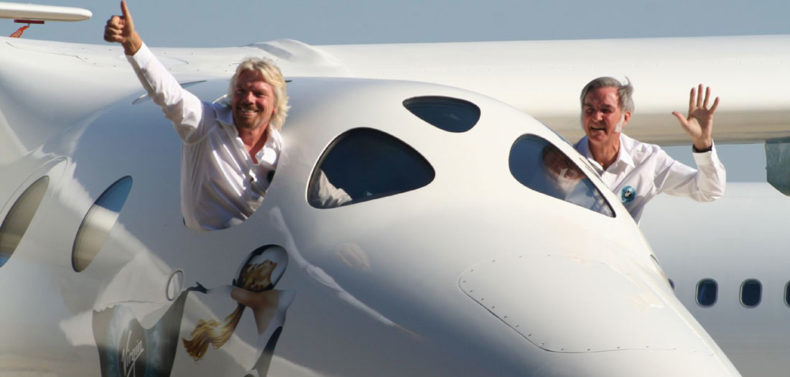When I was nine years old in 1956, I saw a movie titled On the Threshold of Space. In the postwar 1950s, Hollywood studios churned out myriad schmaltzy science fiction films featuring bug-eyed monsters and little green men aboard flying saucers invading our Earth. On the Threshold of Space eschewed the popular sci-fi scenarios, presenting instead the story of the coming exploration of space in a Technicolor and Cinemascope feature film that opened in American theaters more than a year before the Space Age began when Russia orbited the first Earth-circling satellite in 1957. In the film, an intrepid aviator ascends to an altitude of about 20 miles inside a balloon-borne pressurized sphere. “I can see the curve of the Earth,” he exults as moviegoers in 1956 were thrilled by big-screen views of the planet as he gazed from the porthole of his high-flying craft.
Ever since I saw On the Threshold of Space some 65 years ago, I have always wanted to see the majestic and magical curvature of our home planet from space. When Richard Branson’s “Unity” spaceship opened the door to commercial space travel on July 11, those aboard the tiny rocketplane saw in reality the view of Earth that had thrilled movie audiences in 1956.
For now and probably for a long time to come, tourist trips to space will remain mostly in the realm of costly adventures for the rich and famous who want to augment their jet-set credentials with astronaut wings. Tickets aboard billionaire Branson’s spaceships cost about $250,000, and that cost probably won’t drop anytime soon. Still, more than 600 people already have ponied up the money for a chance to view our Earth during a brief suborbital flight to space 50 miles above our planet. Perhaps some of the wealthy and influential space tourists of the near future who see Earth from above its thin atmosphere will come back to their home world with an appreciation for the fragility of our planet and the need to protect Mother Earth.
It didn’t take long for the movie visions of space flight to come true. In 1957 a balloonist aboard the U.S. Air Force’s aptly-named Man High space capsule flew to over 20 miles high and saw views of Earth that were astonishingly like those that were done with special effects just a year before in On the Threshold of Space. In 1959, the Air Force and NASA began flying the X-15 rocketplanes that flew to altitudes of nearly 70 miles and speeds of more than 4,500 miles per hour during flight profiles that were similar to those flown today by Branson’s spaceship. Like “Unity,” the X-15 was carried aloft under the wing of a much larger plane, then released to fire its rocket motor for a quick trip to space and a glide back down to Earth for an unpowered “dead stick” landing on a desert landing strip. The X-15 carried only one pilot, but in 1962 it became the first winged machine to travel to space and back down to what was called “a gentlemanly and dignified landing on a runway” by Neil Armstrong, who flew the X-15 before he journeyed to the moon aboard an Apollo spacecraft in 1969. Richard Branson’s big bucks Buck Rogers thrill ride came nearly six decades after the X-15 pioneered the same pathway to space.
Today the X-15s are museum pieces. The X-15 on view at the Smithsonian Air & Space Museum in Washington is displayed near SpaceShipOne, a prototype of Branson’s space tourism ship.
Passenger airlines began flying in America in the 1920s, just two decades after the Wright Brothers first flew. Routine space tourism will probably take much longer. Adults who are alive today probably won’t live to see reliable and affordable tourist trips to space, but many of the children of 2021 will be alive in the year 2100. They may see Earth from space, or they may live on an Earth sullied by human folly. Our choices today will determine whether the children of 2100 will inherit a livable Earth or a fearful future.
Like what you just read? Support Flagpole by making a donation today. Every dollar you give helps fund our ongoing mission to provide Athens with quality, independent journalism.










